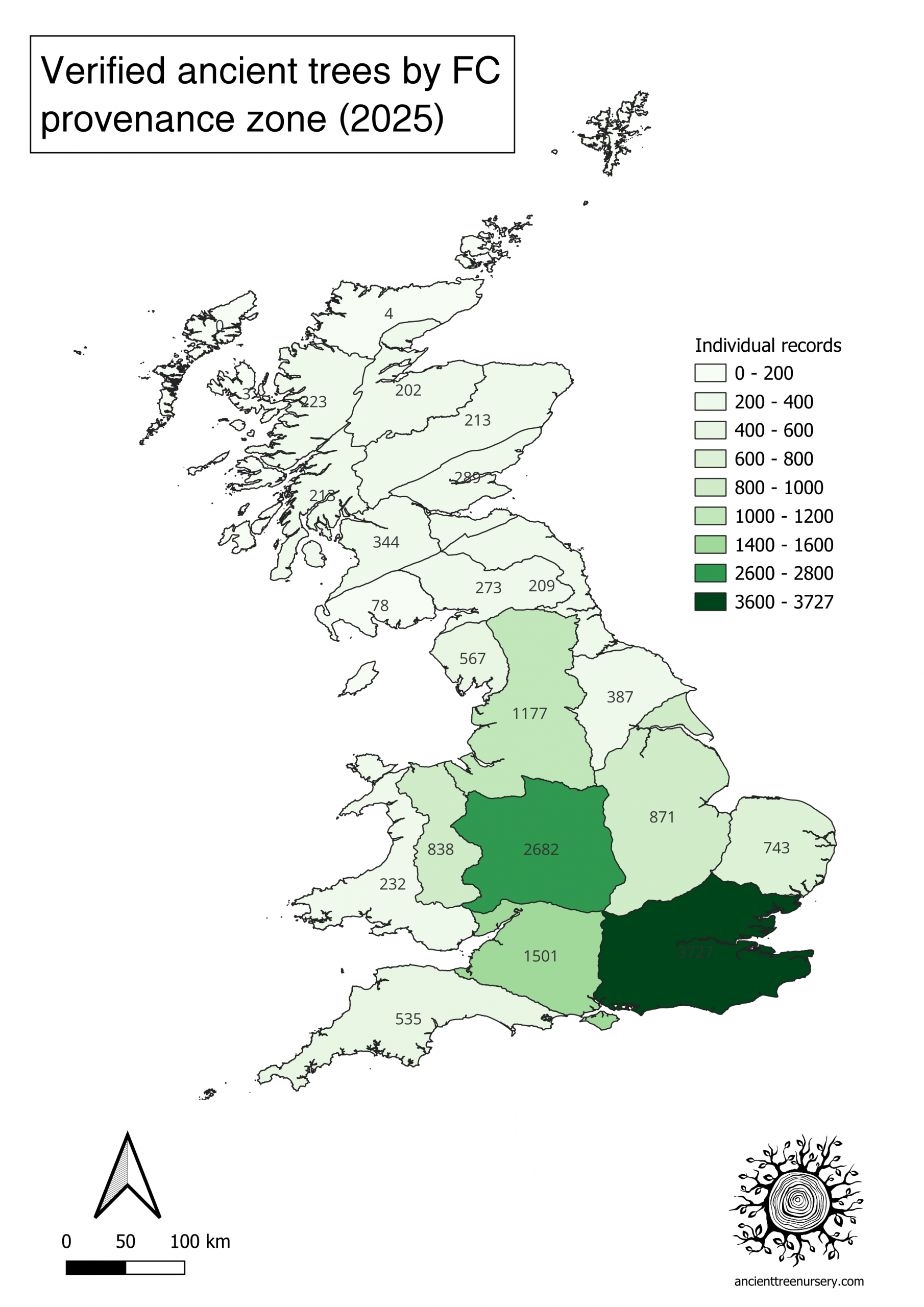Research
The UK’s ancient trees are poorly understood. The location of an estimated 10% are known, largely down to the Ancient Tree Hunt, a citizen science project to map and document ancient, veteran and notable trees. This project, which has been rebranded as the Ancient Tree Inventory, is an amazing resource but comes with some significant caveats. The data are rather patchy, reflecting both search effort and accessibility of land (including to where people live).

The map shows just how skewed the ATI data are. It introduces a complexity in understanding because we don’t know the extent to which this distribution reflects the true distribution of ancient trees, as opposed to the distribution of where volunteers went to look for them.
This is a common problem in citizen science projects and the solution is not easy to find. However, a PhD project at the University of Nottingham (referenced below) did attempt to address the issue and made significant steps towards better understanding the data.
A major objective for the Ancient Tree Nursery is to conduct further research into understanding the known distribution of ancient and veteran trees and addressing the gaps in the knowledge. This will hopefully help to focus the search for the millions of unrecorded old trees that are still out there.
It will also help understand the balance between demand for tree saplings and the capacity of known ancient trees to supply FRM. Even at a very coarse resolution it’s obvious that the distribution of trees in the ATI doesn’t reflect the distribution of tree planting activity across the UK.
References
Cannon, C.H., Piovesan, G. and Munné-Bosch, S., 2022. Old and ancient trees are life history lottery winners and vital evolutionary resources for long-term adaptive capacity. Nature Plants, 8(2), pp.136-145.
Nolan, V., Gilbert, F., Reed, T. and Reader, T., 2021. Distribution models calibrated with independent field data predict two million ancient and veteran trees in England. Ecological Applications, DOI: 10.1002/eap.2695.
Nolan, V., Reader, T., Gilbert, F. and Atkinson, N., 2020. The Ancient Tree Inventory: a summary of the results of a 15 year citizen science project recording ancient, veteran and notable trees across the UK. Biodiversity and Conservation, 29(11), pp.3103-3129.
Nolan, V., Reader, T., Gilbert, F. and Atkinson, N., 2021. Historical maps confirm the accuracy of zero‐inflated model predictions of ancient tree abundance in English wood‐pastures. Journal of Applied Ecology, 58(11), pp.2661-2672.
Nolan, V.J., 2021. Predicting the distribution of ancient and other noteworthy trees across the UK (Doctoral dissertation, University of Nottingham).
Nolan, V., Reader, T., Gilbert, F. and Atkinson, N., 2020. Modelling spatially-biased citizen science species data: A case study using the UK Ancient Tree Inventory. In 2020 ESA Annual Meeting (August 3-6). ESA.
Piovesan, G., Cannon, C.H., Liu, J. and Munné-Bosch, S., 2022. Ancient trees: irreplaceable conservation resource for ecosystem restoration. Trends in Ecology & Evolution, 37(12), pp.1025-1028.
Visick, O.D. and Ratnieks, F.L., 2024. Ancient, veteran and other listed trees as nest sites for wild-living honey bee, Apis mellifera, colonies. Journal of Insect Conservation, 28(1), pp.153-163.

